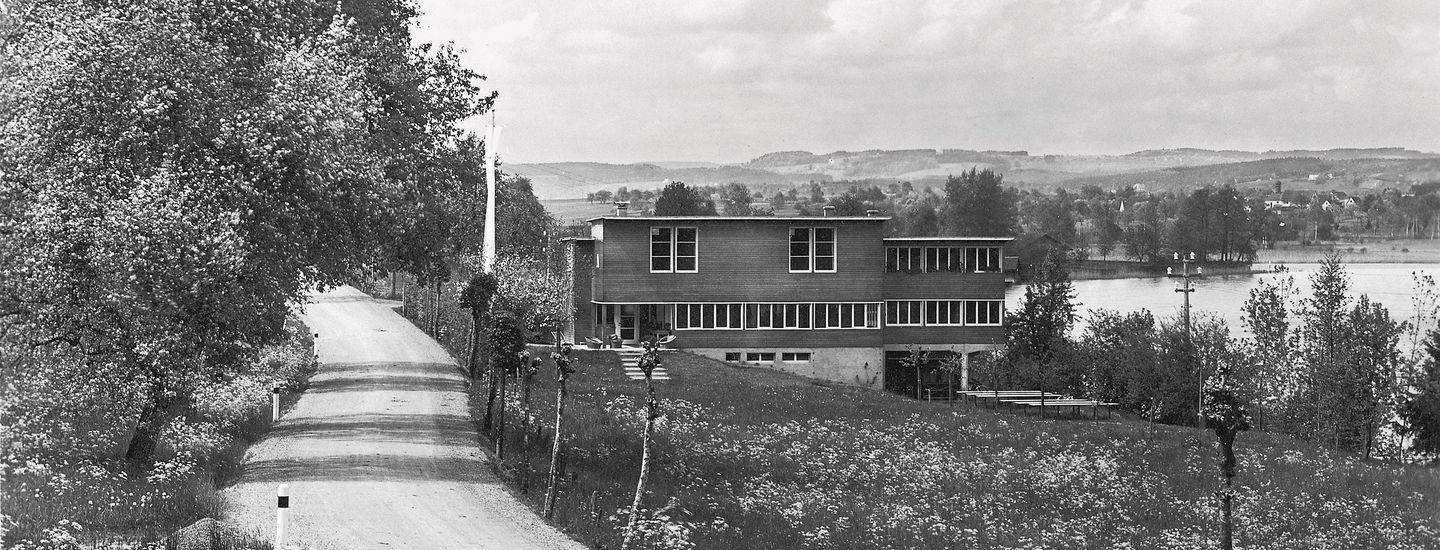
1900 to 1924
Background
(…) «Time is money!» Everything was governed by this law. Railways were built, flying machines invented. This replaced walking. You didn’t walk anymore; it was too slow. Everyone admired nature because it was so fashionable to do so. People raced around the world in cars. But walking, as was customary in our grandfathers’ day, was something we had forgotten.»[1]
«Little money, but strong legs» – healthy young people get hiking
Free hiking – rather than those long treks associated with school trips – promises an independent life beyond the control of the older generation. However, leisure time is limited for young people, with only Sundays being free from school obligations. Only very few apprentices are entitled to take holiday and most workers are also quite unaware of their statutory holiday entitlements, while better-off employees generally can only take 14 days of annual leave.
In response to industrialisation and urbanisation, the Life Reform Movement emerges in the late 19th century, viewing social developments not as progress but as damaging. It is believed that by returning to a way of life closely aligned with nature, people can be cured of their «diseases of civilisation». The Life Reform Movement also encompasses Körperkultur (physical culture), which promotes practices aimed at improving physical health such as dancing, gymnastics and hiking. The movement places great emphasis on young people, who should spend their free time in the great outdoors and not drink alcohol. These ideas are well received by many young people, as they promise to allow them to develop a new, independent culture with their own active leisure activities. Skiing, hiking, singing and dancing could be pursued independently.
Students also have these ideals in mind when they establish a bourgeois youth movement they call «Wandervogel». Schweizerischer Bund für Alkoholfreie Jugendwanderungen (Wandering Bird. Swiss Association for Alcohol-Free Youth Hiking Excursions). The movement, based on the German model, is set up in 1907 at the main festival of the Helvetia Student Fraternity. Right at the beginning, there is a heated debate about moral conduct, such as whether young women should be admitted. Women are granted access, provided that excursions lasting several days are carried out separately. In keeping with the movement’s name, there is a strict ban on alcohol, along the lines of, «If you enjoy your life in the great outdoors, you don’t need to be artificially intoxicated.»[2]
In 1916, 1,200 young people are members of the Wandervogel, comprising 400 girls and 800 boys. They publish their own monthly magazine and meet for holiday hikes, which last between four days and two weeks and are led by an older member who books accommodation in huts.
At Whitsun, members of the Wandervogel meet at «Landsgemeinden» (annual citizen’s meetings). The young people, who are not yet entitled to vote, practise grassroots democracy and community life at their annual spring gatherings: «The morning is dedicated to the negotiations. Every Wandervogel has the right to speak and vote. After business is completed, everyone plays and sings. One group learns a new folk song from the other.» [3]
The Swiss Alpine Club SAC is founded more than 40 years before the Wandervogel movement. Due to its bourgeois-conservative values and the exclusion of female active members, the SAC does not make a convincing partner for the Wandervogel organisation. The freedom-loving young people reject a merger in 1911 – the SAC would have liked to have incorporated the Wandervogel into their organisation as a youth section.
In addition to predominantly bourgeois youth movements, organisations are also established in Switzerland around 1900 that are more closely aligned to the labour movement. In Zurich, young men join forces to form the “Association of Like-Minded Young Workers for the Purpose of Teaching and Friendship”. The initiator is the social-democratic pastor Paul Pflüger. In addition to political education, the “Jungburschenverein” (Young Boys’s Association), as it is known for short, also attaches great importance to hiking together as a form of physical exercise. The popular opinion is that fit young men should become good representatives of the workforce.[4]
The young people of the Freischar Evangelical Youth Movement, which was founded in 1918, are also politically active. In response to the experiences of the First World War, the religious socialist Leonhard Ragaz, a professor of theology and later pastor to the poor, encourages young people to think differently and view the world in a different light. Members of the Freischar movement, therefore, reject rigid structures and are committed to world peace. Social get-togethers – including hiking together – and political education play a major role for them. Among the students is Ernst Schuler, who began fostering connections with other youth groups at an early age: «Despite the different goals and tasks that were set, there were opportunities to work together. » [5] In addition to burning «trashy literature,» young people from a wide variety of organisations want to put an end to the Fasnacht carnival. Yet, these campaigns are short-lived. What everyone likes, however, is hiking.
[1] F.K.: From the article “Vom Wandervogel”, published in the periodical Die Berner Woche in Wort und Bild: ein Blatt für heimatliche Art und Kunst, (The Bernese Week in Words and Pictures: A Magazine for Local Art and Culture) Volume 6, 1916, p. 271. ((bwo-001_1916_6__995_en.pdf))
[2] F.K.: From the article “Vom Wandervogel”, published in the periodical Die Berner Woche in Wort und Bild: ein Blatt für heimatliche Art und Kunst, Volume 6, 1916, p. 271. ((bwo-001_1916_6__995_en.pdf))
[3] F.K.: From the article “Vom Wandervogel”, published in the periodical Die Berner Woche in Wort und Bild: ein Blatt für heimatliche Art und Kunst, Volume 6, 1916, p. 271. ((bwo-001_1916_6__995_en.pdf))
[4] Cf. Hardegger, 2017
[5] Pro Juventute, 1932 : Ernst Schuler, p. 276.










Share this page